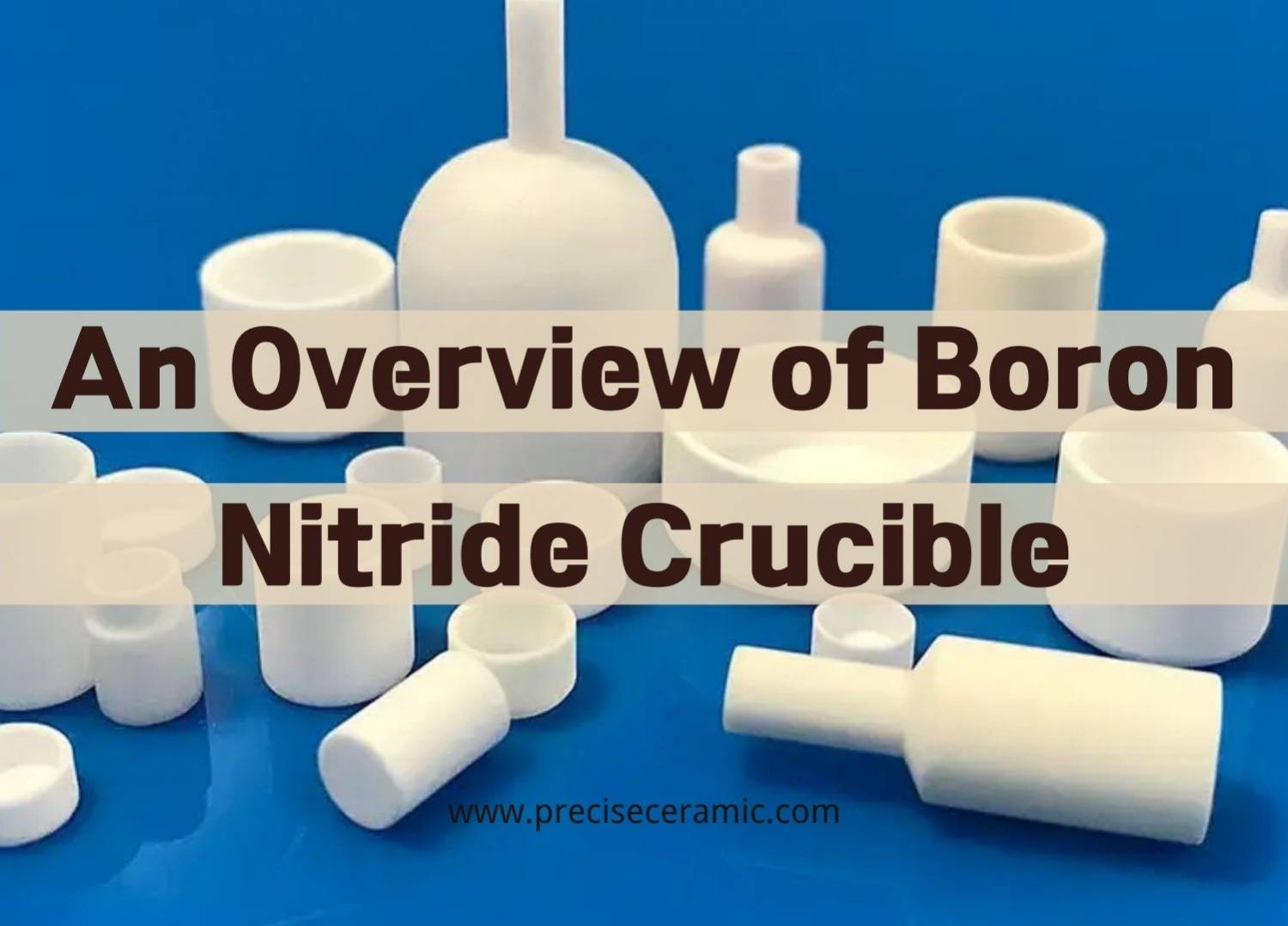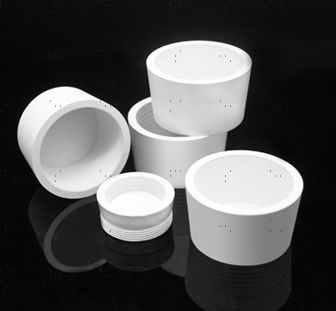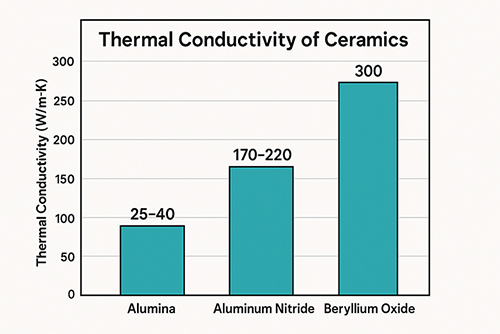An Overview of Boron Nitride Crucible

What is Boron Nitride?
Boron nitride is a thermally and chemically resistant refractory compound composed mainly of boron and nitrogen elements. Its chemical formula is BN. Other common descriptions of Boron Nitride include Hexagonal boron nitride (H-BN) and hot-pressed boron nitride. Boron nitride exists in various crystalline forms, which are isoelectronic to a similarly structured carbon lattice. The most stable form of boron nitride is the hexagonal form that corresponds to graphite. It is also the softest form among BN polymorphs, so it is used as a lubricant and an additive to cosmetic products. The cubic (zincblende, also called sphalerite structure) variety that is analogous to diamond is called c-BN. Cubic boron nitride (c-BN) is softer than diamond, but it has superior thermal and chemical stability. The wurtzite BN form is rare but similar to lonsdaleite. It is slightly softer than the cubic form. Further Reading: Boron Nitride Overview: Properties, Production, and Uses
What is Boron Nitride Crucible?
Boron nitride crucible is a chemical compound containing equal amounts of nitrogen and boron nitride. Because hexagonal boron nitride (H-BN) crucible is very soft, it is often used as a lubricant and an additive to cosmetic products. It is an excellent self-lubricate ceramic capable of withstanding high temperatures and maintaining its lubricating capability in a high vacuum environment. H-BN has similar mechanical properties as graphite, but it has excellent electrical resistance.

Boron Nitride crucibles
Because of its high thermal and chemical stability, the boron nitride crucible is used in high-temperature applications. They are also used in metal casting, as it binds well with metals because of the formation of interlayers of metal borides or nitrides. Materials with cubic boron nitride crystals are also usually used in making cutting tools. The benefits of using boron nitride crucible are its low wettability to molten metal, relatively high thermal shock resistance, and conductivity with low thermal expansion. Another advantage of the boron nitride crucible is its very high working temperature with proper inert gas protection (temperatures above 3000℃ have been recorded).
Properties of Boron Nitride Crucible
The physical properties of boron nitride are summarized in the table below:
| Molecular Weight | 24.82 g/mol |
| Appearance | White crucibles |
| Melting Point | 2973 °C |
| Density | 1.9 to 2.1 g/cm3 |
| Solubility in H2O | N/A |
| Electrical Resistivity | 13 to 15 10x Ω-m |
| Poisson's Ratio | 0.11 |
| Specific Heat | 840 to 1610 J/kg-K |
| Thermal Conductivity | 29 to 96 W/m-K |
| Thermal Expansion | 0.54 to 18 m/m-K |
| Young's Modulus | 14 to 60 GPa |
| Exact Mass | 25.012379 |
| Monoisotopic Mass | 25.012379 |
These properties mostly account for the performance of boron nitride crucibles in several important applications.
Applications of Boron Nitride Crucible
Perhaps, the most important property of the boron nitride crucible that accounts for its widespread use in different applications is its ability to withstand high temperatures in different environments. This, in combination with other properties, especially its excellent corrosion resistance and electrical resistance, account for the use of boron nitride ceramic product in the following areas:
- Insulators for high-temperature furnace
- Electric insulators in vacuum system
- Hexagonal BN is used as an alternative lubricant to graphite mostly when the electrical conductivity or chemical reactivity of graphite is deemed to be problematic.
- They are used in electronics as a substrate for semiconductors, microwave-transparent windows, and as a structural material for seals.
- It is used as a spacer for glass melting
- Crucibles for crystal growth
- Break rings for horizontal casting machine
- Feedthrough for high voltage equipment
- Boron Nitride parts for ion injection equipment
- Xerographic process and laser printers, where it serves as a charge leakage barrier layer of the photo drum.
- In the automotive industry, h-BN is often mixed with a binder like boron oxide to seal oxygen sensors.
Packaging of Boron Nitride Crucible
When packaging boron nitride crucibles, care is often taken to avoid causing damage to the products. Careful packaging of boron nitride crucibles helps to preserve the quality of the products. If you’re looking to purchase quality and reliable boron nitride ceramics, you want to ensure that the products are well packaged to minimize damage during storage and transportation. You can also get custom packaging for a variety of purposes, including commercial and research applications. In most cases, you may want to request boron nitride with high purity, as it has a better thermal resistance. Most manufacturers can produce boron nitride crucible with a purity level of up to 99.99%, in addition to following the applicable ASTM testing standards. For more information, please visit https://www.preciseceramic.com/.
{{item.content}}
LEVE A REPLY
{{item.children[0].content}}
{{item.content}}
LEAVE A REPLY
SUBSCRIBE OUR NEWSLETTER
- Boron Nitride in Cosmetics: Enhancing Performance and Sensory Appeal
- Maximize MOCVD Yield and Purity with Hexagonal Boron Nitride Setters
- What Are the Advantages and Uses of Boron Nitride Ceramic Sheet?
- The Compression Annealing Advantage for Pyrolytic Boron Nitride
- Beyond Insulation: The Surprising Spectrum of Ceramic Thermal Conductivity











